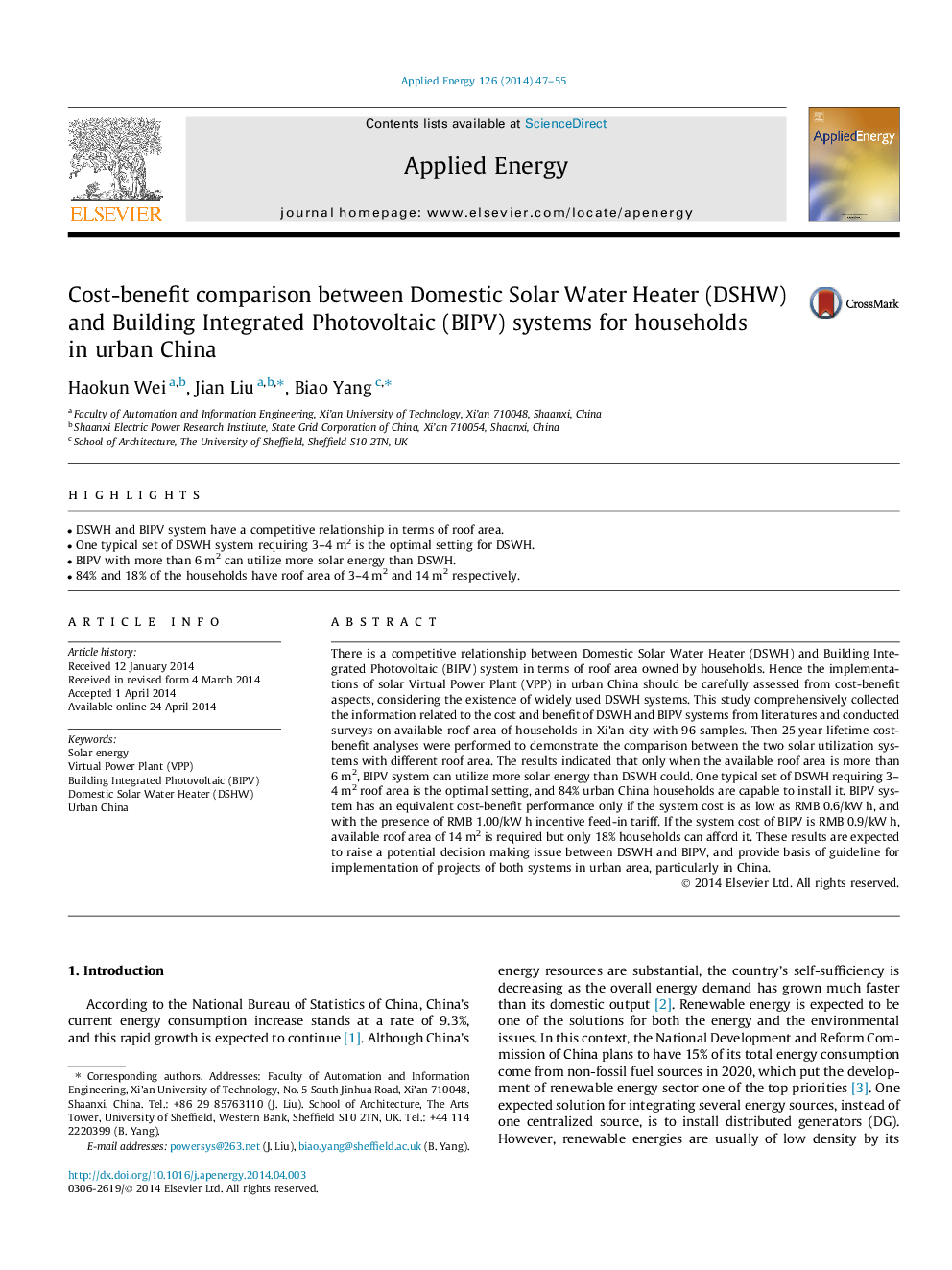| کد مقاله | کد نشریه | سال انتشار | مقاله انگلیسی | نسخه تمام متن |
|---|---|---|---|---|
| 242783 | 501902 | 2014 | 9 صفحه PDF | دانلود رایگان |

• DSWH and BIPV system have a competitive relationship in terms of roof area.
• One typical set of DSWH system requiring 3–4 m2 is the optimal setting for DSWH.
• BIPV with more than 6 m2 can utilize more solar energy than DSWH.
• 84% and 18% of the households have roof area of 3–4 m2 and 14 m2 respectively.
There is a competitive relationship between Domestic Solar Water Heater (DSWH) and Building Integrated Photovoltaic (BIPV) system in terms of roof area owned by households. Hence the implementations of solar Virtual Power Plant (VPP) in urban China should be carefully assessed from cost-benefit aspects, considering the existence of widely used DSWH systems. This study comprehensively collected the information related to the cost and benefit of DSWH and BIPV systems from literatures and conducted surveys on available roof area of households in Xi’an city with 96 samples. Then 25 year lifetime cost-benefit analyses were performed to demonstrate the comparison between the two solar utilization systems with different roof area. The results indicated that only when the available roof area is more than 6 m2, BIPV system can utilize more solar energy than DSWH could. One typical set of DSWH requiring 3–4 m2 roof area is the optimal setting, and 84% urban China households are capable to install it. BIPV system has an equivalent cost-benefit performance only if the system cost is as low as RMB 0.6/kW h, and with the presence of RMB 1.00/kW h incentive feed-in tariff. If the system cost of BIPV is RMB 0.9/kW h, available roof area of 14 m2 is required but only 18% households can afford it. These results are expected to raise a potential decision making issue between DSWH and BIPV, and provide basis of guideline for implementation of projects of both systems in urban area, particularly in China.
Journal: Applied Energy - Volume 126, 1 August 2014, Pages 47–55